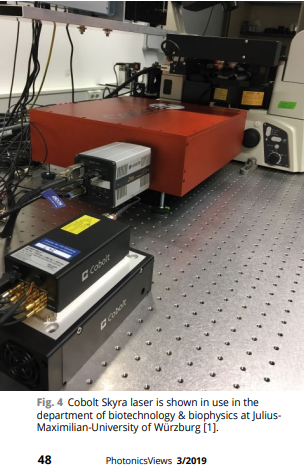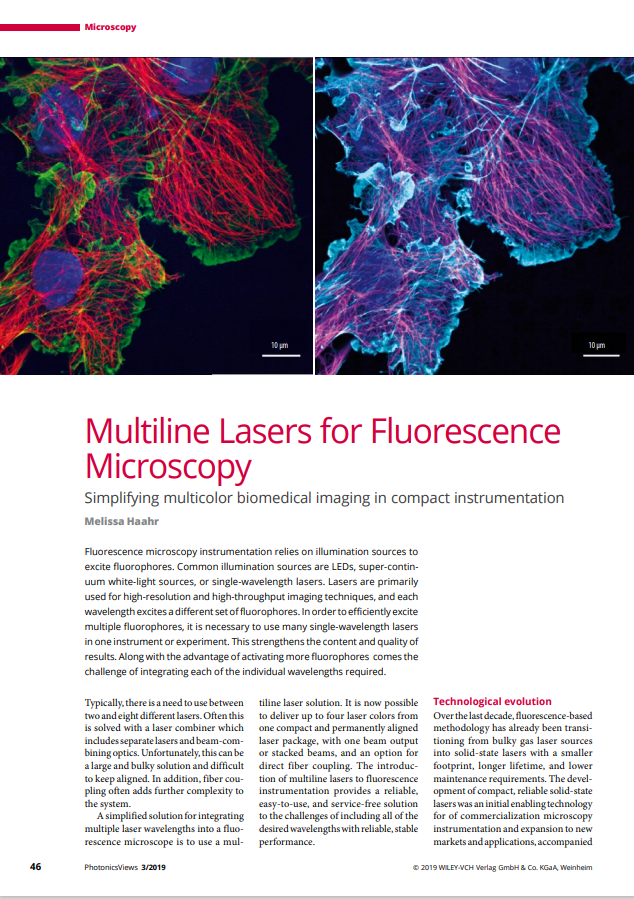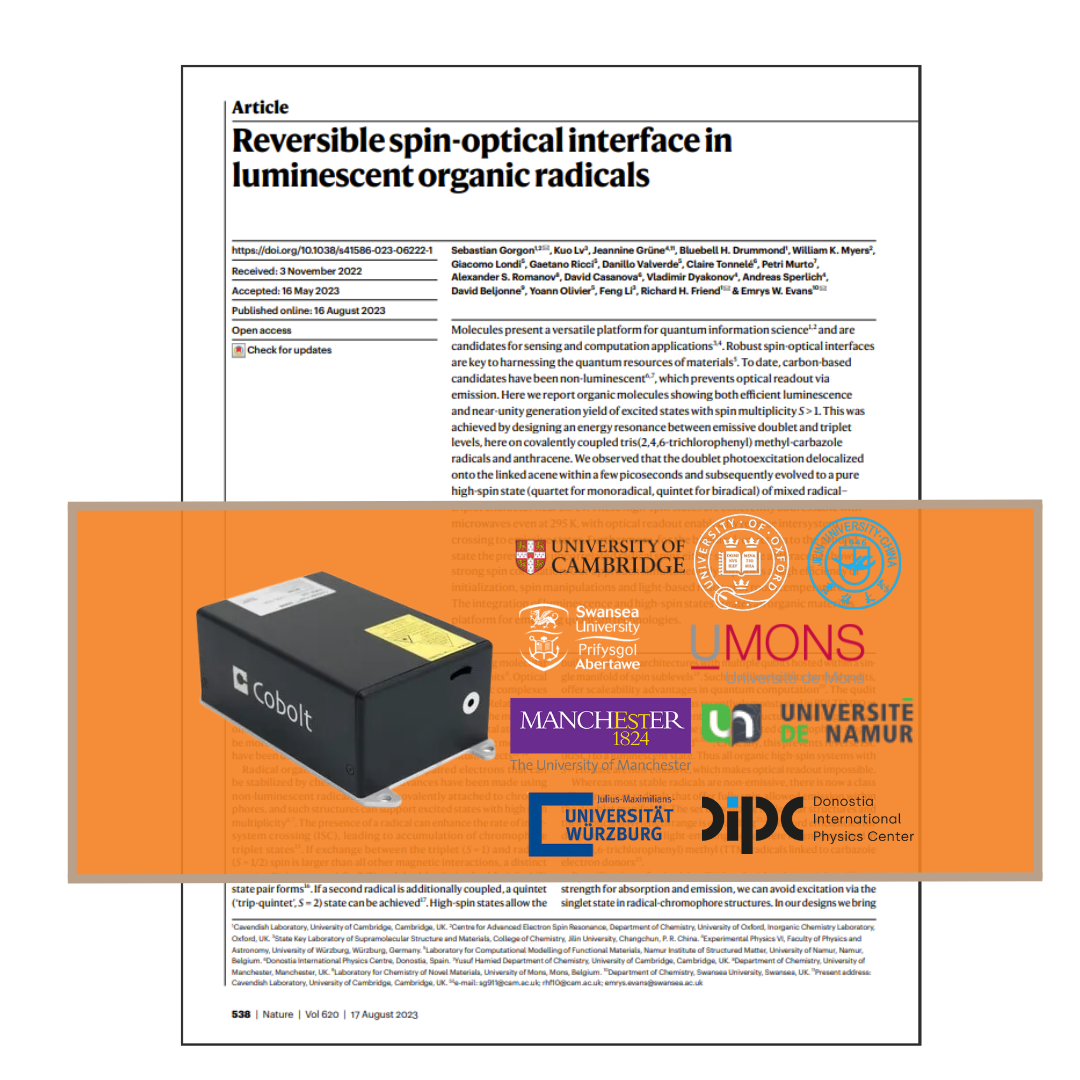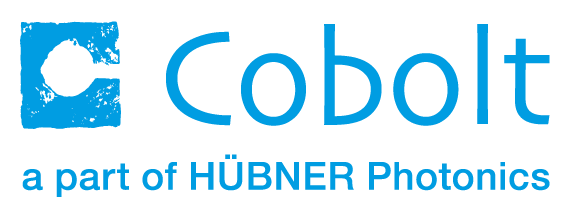3 March, 2021
Editorial: Photonics Views June 2019 edition
Multi-line Lasers simplify fluorescence microscospy
by Melissa Haahr
Fluorescence microscopy instrumentation relies on illumination sources to excite fluorophores. Common illumination sources are LEDs, super-continuum white-light sources, or single-wavelength lasers.Lasers are primarily used for high-resolution and high-throughput imaging techniques, and each wavelength excites a different set of fluorophores. In order to efficiently excite multiple fluorophores, it is necessary to use many single-wavelength lasers in one instrument or experiment. This strengthens the content and quality of results. Along with the advantage of activating more fluorophores comes the challenge of integrating each of the individual wavelengths required.
Technological evolution
Over the last decade, fluorescence-based methodology has already been transitioning from bulky gas laser sources into solid-state lasers with a smaller footprint, longer lifetime, and lower maintenance requirements. The development of compact, reliable solid-state lasers was an initial enabling technology for of commercialization microscopy instrumentation and expansion to new
markets and applications, accompanied by parallel improvements in data storage and advanced camera systems, to name a few. While some applications are able to utilize the advancements in LED and super-continuum white-light sources, the high-resolution, high-speed techniques still rely on the high brightness and wavelength precision of lasers.
Currently, many researchers and manufacturers align and integrate individual laser sources for each wavelength on the optical bench or in instrument. These laser combiners and laser light engines have simplified some of these assemblies substantially. However, they do not eliminate the need for alignment (and re-alignment) over time. A permanently aligned multi-line laser offers a robust and alignment free option.
Multi-line laser technology
The Cobolt Skyra multi-line laser is unique in its design and manufacturing. It is built using patent-pending alignment techniques and utilizing Cobolt’s proprietary HTCure technology. The HTCure technology is based on careful thermo-mechanical matching and high-temperature fixation of miniaturized optics. The lasers are built on a single, temperature-controlled platform for stable operation and protection from thermomechanical misalignment.

The Skyra can include up to four wavelengths, within the range of 405 nm to 660 nm with beam position overlap <50 μm at the exit and pointing stability <10 μrad/°C over a temperature range of 20 °C to 50 °C.
More resources
Explore our Publications for practical insights on how our customers are leveraging the power of our lasers in their projects.
Customer publications
Product line: Cobolt
Application: Quantum
Wavelength: 532 nm, Tunable VIS
New Discovery in Quantum Technology: Shining Light on Organic Molecules
scientists have developed organic molecules that can glow brightly and be used in advanced quantum technologies
Customer publications
Product line: Cobolt
Application: Quantum
Wavelength: 594 nm, Femtosecond 1um
Nanographene Research Unveils Highly Soluble Quantum Dots
Researchers have unveiled a new family of nanographene materials with the help of the Cobolt Mambo 594 nm laser.
Customer publications
Product line: Cobolt
Application: Fluorescence microscopy
Wavelength: 488 nm
New Breakthrough in Cellular Imaging with the Cobolt 06-MLD Laser
Scientists at the KTH Royal Institute of Technology in Sweden, and Calico Life Sciences, have made significant strides in cellular imaging.







